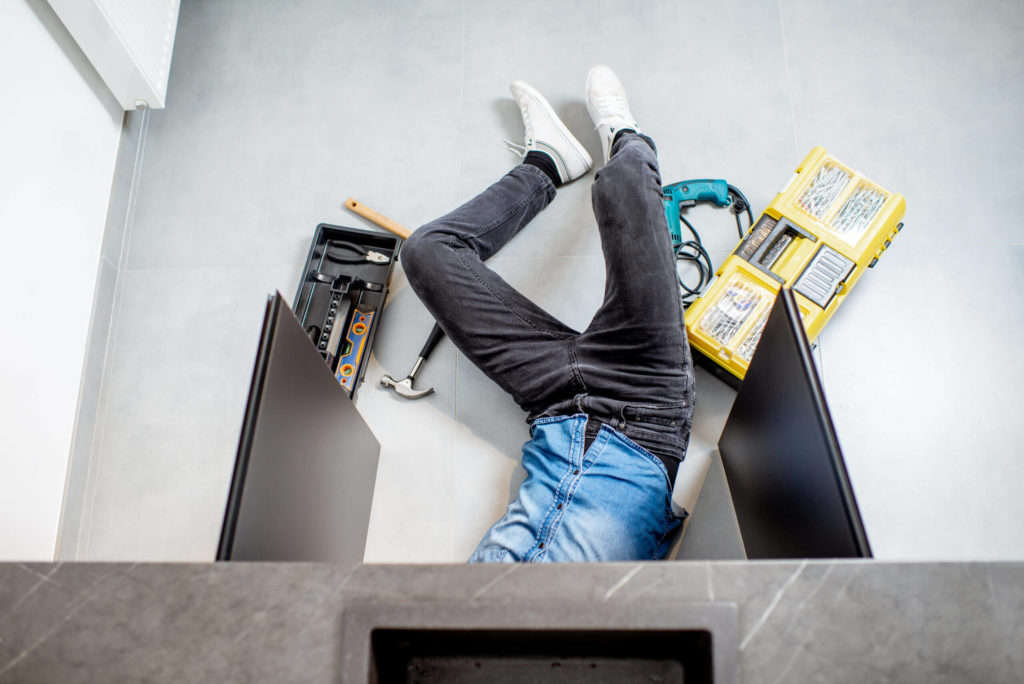Ultimate Residential Plumbing Maintenance Checklist

Your Guide for Residential Plumbing Maintenance
There are few things more frustrating than a residential plumbing emergency.
But with a little preparation and this checklist of items to inspect with, you’ll have peace of mind that your residential home is ready for anything.
The following list covers the most critical places in the house to look for leaks or signs of trouble. By keeping an eye on these places, you can limit the risk of a serious plumbing problem down the line.
With that being said, let’s go ahead and dive into things.
1. Sink, Faucet, And Shower Checklist
Check For Leaks And Signs Of Wear
Make sure to check all the faucets in your home for leaks, including the showerhead.
Minor leaks can add up to hundreds of dollars over time. And if not addressed they can contribute to major water damage down the road. It’s a small thing to do. But it can make a big difference and can save you lots of money.
Clean Up Dirt Or Mineral Deposits On The Sink
Over time, mineral deposits build up on the bottom of your sink. This can restrict water flow and cause annoying leaks.
Scrubbing off these hard-water deposits is an easy fix that will save you money – and from a lot of stress in the future. Your plumber can do this by flushing out your faucet with water and vinegar.
But you can also clean off hard-water deposits with a combination of baking soda and vinegar. Or just by boiling water on the stove and pouring it down the drain.
Inspect Your Residential Plumbing Fixtures For Corrosion Or Rusting
This is where a leaking pipe can lead to serious damage.
When you see rust or corrosion, it’s time to call in a plumber for an inspection and repair. Corroded pipes are more susceptible to leaks, which means these small issues could turn into big ones down the road.
2. Toilet Checklist
Check Your Toilet For Leaks
The toilet is another part of your plumbing system that you should keep an eye on.
Any leaking could indicate a problematic toilet, which can be an annoying problem in the future.
To check for leaks, place several drops of food coloring in the tank and look for colored water in the bowl overnight. If you see color, then there’s an issue with the toilet that needs to be fixed asap.
Inspect The Toilet Flange To Make Sure It’s Not Cracked Or Damaged
To do this, you first need to remove the toilet tank.
Then look at the flange (the part of the toilet that connects to the rest of the pipes) and check around it for cracks or leaking.
If everything looks good, wipe down your entire toilet with vinegar and then with baking soda. This will help to remove hard-water stains and mineral deposits, which can help extend the life of your toilet.
But if there’s an issue, then you may need to call in a plumber for a replacement.
Look For Any Loose Parts To Tighten
As you’re cleaning, make sure to look for any loose bolts or parts that can break off.
If you find a problem with your toilet (or if it’s older than 10 years) then it may be time for a replacement with a newer model. As toilets get older, they often begin to leak and then can start to malfunction. So this is the safest way to go.
3. General Residential Plumbing Checklist
Inspect Your Water Heater
The water heater is another essential part of your plumbing system that can lead to problems if you don’t maintain it well.
Just look for signs of rust or corrosion, which may indicate a problem with your water heater. These issues often lead to more serious damage and higher costs, which you should avoid ahead of time.
So try to get it looked at (and repaired) sooner rather than later.
Inspect Your Dishwasher For Leaks And Loose Connections
To inspect for leaks, you’ll want to look at the hose that connects between the sink and dishwasher.
If there are any cracks or signs of water leakage, then it may be time for a replacement. With older models, you might even find some rust or corrosion that needs to be taken care of.
If it’s been a while since your dishwasher was replaced, then it may not be worth repairing in the first place. You should probably go ahead and install a new one instead.
Check Your Laundry Machine’s Filters And Hoses
Check your laundry machine’s hoses for leaking, and make sure they’re not cracked or damaged.
If everything’s working fine then it may just be time to change the filter. This needs to be done every month or so depending on how much use your washing machine gets.
If you do happen to find a problem, then you’ll want to call in a plumber to inspect and repair the machine.
If you’re not sure when your machine was last inspected, then now is a good time to do it before any major problems arise.
Check Your Residential Plumbing Outside Appliances
Go outside and check things like your water pump and sprinklers, as well as any other outdoor appliances you may have.
What you should look for are any signs of leaking or corrosion that could indicate a faulty part. Start by checking around the outside of any hoses you have. Then check for cracks in any plastic or rubber parts.
If you find any issues, then you’ll want to call in a professional plumber to inspect and repair them before more serious damage occurs. Most experts recommend annual inspections for all outside plumbing systems.
For a top-class residential plumber near you, pick up the phone and call the Plumbing Squad!
Read our Important Facts
